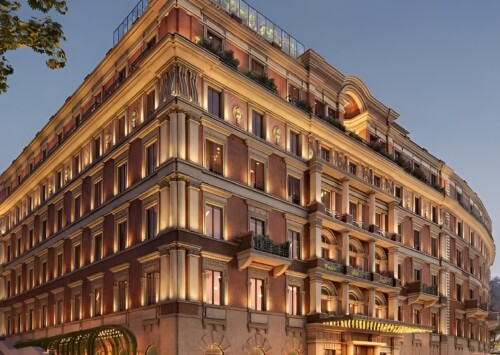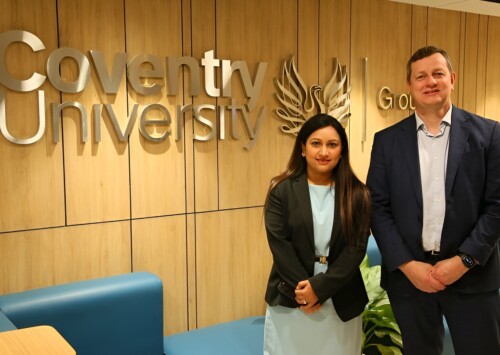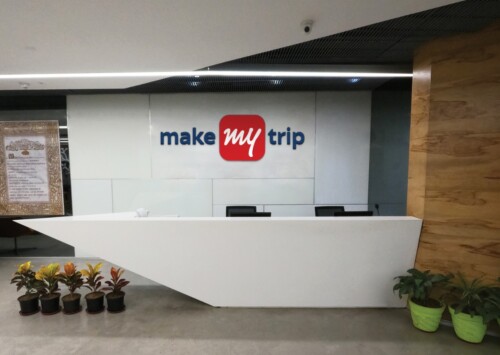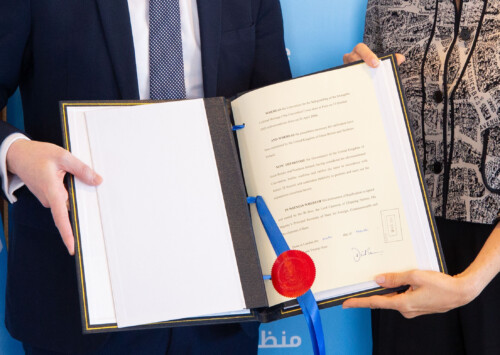Indian Medical Tourism
India & You
Nov-Dec 2014
INDIA HAS ALWAYS BEEN KNOWN AS A COUNTRY THAT ATTRACTS PEOPLE FOR SPIRITUAL WELL-BEING. INCREASINGLY, THE COUNTRY IS ALSO GETTING TOURISTS SEEKING PHYSICAL WELL-BEING, FOR TREATMENTS RANGING FROM BASIC DENTISTRY TO COMPLEX CARDIAC AND ORTHOPAEDIC PROCEDURES.
Zeinab, a 53-year-old Qatari woman, has just finished her two-week sejour in India and is now headed back to Doha . Like most tourists, Zeinab did go to the Taj Mahal in Agra and was duly awe-struck. She also visited the pink city Jaipur. But most of her two weeks were spent in a New Delhi hospital where Zeinab underwent a cardiac surgery.
. Like most tourists, Zeinab did go to the Taj Mahal in Agra and was duly awe-struck. She also visited the pink city Jaipur. But most of her two weeks were spent in a New Delhi hospital where Zeinab underwent a cardiac surgery.
“Initially, I was a bit worried about getting my treatment in a poor country like India. But when my family met with the doctors and talked to them they were reassured that not only were the doctors well qualified and experienced in complex surgeries, but also the hospitals in India were well-equipped. At this stage, I agreed to get the operation done here. And barely three weeks after taking the decision, here I am, going back to my home, with a bonus of having visited the Taj Mahal,” she says smiling.
By opting for India, not only did Zeinab save precious, at times life-saving, time, but she also saved a lot of money. A cardiac operation in best of the Indian hospitals costs less than 30 per cent of what it would cost in Europe or United States, the first port of call for most Qatari or other Gulf nationals.
Over the last few years, India has been receiving an increasing number of patients like Zeinab, from practically all over the world as the ultra-modern and cost-efficient healthcare system of India makes its presence felt across the globe.
Receiving patients from overseas is not for India, however. For several decades, the country has been the preferred healthcare destination for thousands of people from South Asia, Middle East and Africa as the better-off people from these countries and regions choose India’s hospitals and doctors. There have also been some remarkable life-saving operations that have made headlines around the world.
Indian Healthcare Comes of Age
However, with the emergence of new companies in healthcare, mainly in the private sector, medical tourism has become a serious business as most companies and the Indian government try to project the country as a healthcare destination for people from around the world.
The Indian healthcare industry is growing at a rapid pace and is expected to become a USD280 billion industry by 2020 from USD70 billion in 2012 and is expected to be around USD145 billion by 2017. According to the Investment Commission of India, the healthcare sector has experienced phenomenal growth of 12 percent per annum in the last 4 years. Rising income levels and growing elderly populations are all factors that are driving this growth. In addition, changing demographics, disease profiles and the shift from chronic to lifestyle diseases in the country has led to increased spending on healthcare delivery.
India produces over 250,000 doctors annually in the modern system of medicine. A higher number of nurses and para-medical professionals and practitioners of Indian Systems of Medicine and Homoeopathy are also produced.
Driving the Growth
Driving the increasing investments into the healthcare industry in the private sector is the rapidly emerging middle class which is well over 400 million and is spread almost uniformly all over the country. It is also aided by the emergence of health insurance as a larger number of employed Indians take health insurance for themselves and their families.
As incomes rise and the number of available financing options in terms of health insurance policies increase, consumers have become more and more engaged in making informed decisions about their healthcare and associated costs. In order to remain competitive, healthcare providers are now not only looking at improving operational efficiency but are also looking at ways of enhancing patient’s overall experience. These exceptional, proactive and ahead of the curve institutions are the ones leading the way for the Indian healthcare industry.
As a result, the Indian healthcare sector has emerged as one of the largest service sectors in India. Healthcare spending in India is expected to rise by 12 per cent per annum. As per an estimate, during 2012, healthcare spending contributed per cent of GDP and employed around 9 million people. Rising incomes and growing literacy are likely to drive higher per capita expenditure on healthcare. The trend is shifting from infectious diseases to lifestyle diseases.
The medical equipment market is growing at a rapid pace. The demand for hi-tech products is close to 80 percent of the overall market in India. Major international medical equipment companies are lining up their investments in India for setting up local bases.
Laying the Foundation
Srinivas Kumar, director (operations) of Vasan Dental Care, one of the biggest dental care companies in the country says the last two decades have seen the laying of the foundation of the healthcare industry and which in turn has led to the emergence of medical tourism in India and he says there is a tremendous potential for growth in the future.
Outlining the reasons for the development of medical tourism, Kumar says “India has plenty of internationally trained doctors who can provide a culturally and linguistically diverse experience. Compared to peers in the West and Asia, India has a comparative advantage in the cost of offering high quality medical services. Indian healthcare provides worldclass services complaint with all International guidelines and standards. It is also equipped with latest technology providing quick, efficient and successful treatment outcomes.”
The Indian healthcare system also offers a continuity of care like periodic monitoring of patients health and round the clock care via internet and tele/video conferencing. Kumar points out that the Indian government has also taken a proactive approach towards medical tourism and has offered all the policy support needed to develop India as a global healthcare hub, policy help in the form of reduced excise and customs duty, and exemption from service tax.
Like the developed nations, India offers a comprehensive healthcare system which can take care of any medical need of any patient. The country has a special edge in complex procedures involved in treating commonly occurring but serious cases like cardiology and cardiothoracic surgery, orthopedic surgery (including knee and hip replacement surgery), organ transplant surgery (including liver, kidney). It also offers ultra modern cancer treatments as well as neurosurgery, ophthalmology and pediatric surgery. Currently, the major players of health care sector in India include Apollo Hospitals, Escorts Hospital, Fortis Hospitals, Breach Candy, Hinduja, Mumbai’s Asian Heart Institute, CARE Hospitals, Max Hospitals, Manipal Hospitals and even public hospitals like the New Delhi-based AIIMS.
One of the biggest players in medical tourism is Apollo Group, which is based in Hyderabad in southern India and has hospitals all over India and in neighbouring countries. Apollo has been a forerunner in medical tourism in India and attracts patients from Southeast Asia, Africa, and the Middle East. The group has tied up with hospitals in Mauritius, Tanzania, Bangladesh and Yemen besides running a hospital in Sri Lanka, and managing a hospital in Dubai.
Another corporate group running a chain of hospitals, Escorts, claims it has doubled its number of overseas patients. Other big private sector multi-speciality players like Max and Fortis too are making headway in this segment. But it is not limited to large groups, even standalone hospitals like Jaslok or Breach Candy in Mumbai or Ruby Hospital in Kolkata that recently signed a contract with the British insurance company, BUPA. The management hopes to get British patients from the queue in the National Health Services soon. Completing the scenario are the Indian healthcare BPO firms like Hinduja TMT, Apollo Heart Street, Comat Technologies, Datamatics and Lapiz that work in the areas of claim adjudication, billing and coding, transcriptions and form processing.
The government has also made visas for medical tourists much simpler to obtain and it intends to set up one-stop centres in key international markets to facilitate patient flow. The Confederation of Indian Industry, along with Indian Health Care Federation (IHCF), wants to establish an Indian healthcare brand synonymous with safety trust and excellence.
to facilitate patient flow. The Confederation of Indian Industry, along with Indian Health Care Federation (IHCF), wants to establish an Indian healthcare brand synonymous with safety trust and excellence.
Advantage India
One of the primary drivers of medical tourism to India is the extreme cost advantage that Indian hospitals offer. Even a simple dental treatment in India is cheaper seven to eight times, compared to the United States or the EU, even if the airfare and other charges are taken into account. For the more comprehensive procedures, the savings can be into thousands of euros.
As Indian hospitals like to say, they offer First World treatments at Third World prices. The cost differential across the board is huge: only a tenth and sometimes even a sixteenth of the cost in the West. Open-heart surgery could cost up to USD70,000 in Britain and up to USD150,000 in the US; in India’s best hospitals it could cost between USD3,000 and USD10,000. Knee surgery (on both knees) costs less than USD6000 while the cost in the UK is nearly USD17,000. Similarly, dental, eye and cosmetic surgeries in Western countries cost between five to ten times as much as in India.
Lower prices alone would mean nothing unless they came with the complete package of ultra modern equipment and very well trained medical workers. The government has played its part here by lowering the import duty on medical equipment and also opened up the trade market , leading to the availability of world-class health care equipment, materials and infrastructure at rates much lower than those elsewhere. This allows the hospitals to lower their tariffs as well.
, leading to the availability of world-class health care equipment, materials and infrastructure at rates much lower than those elsewhere. This allows the hospitals to lower their tariffs as well.
Another factor promoting medical tourism is that, at least for elective surgeries, coming to India on a vacation, visiting the tourism attractions and getting the treatments done anonymously is a major plus for many who seek anonymity in these treatments. One of the biggest pulls of course is the absence of any waiting period. In the West, even basic treatments mean weeks of waiting before consulting a doctor and months or years before getting the surgeries or treatments. However, in India, most hospitals take the patients the same day and hence save a lot of time and complications that come with the long waiting periods that exist in other countries.
Future Potential
Medical tourism sector in the country has been growing at an annual average rate of 27 per cent and is expected to reach EUR3 billion by the end of this fiscal, more than twice the level in 2011. The country is expected to receive a total of 3.2 million medical tourists next year, up from a bare 150,000 ten years earlier. The past decade has also seen a sharp rise in visitors from developed world, which though currently come in for mainly elective or discretionary treatments like cosmetic, regenerative or dental (see box page 15).
But an increasing number is also opting for India for more complex procedures like knee replacement, cardiac treatment, cancer, and other serious ailments. Kumar says that while earlier India used to receive medical tourists from South and West Asia, Middle East and Africa, along with the CIS states in central Asia, now it also regularly receives patients from the US and Europe.
Currently, however, the industry remains focused on the low-hanging fruits of patients from developing nations instead of making the entire world a potential market . The real potential lies in the developed world where the governments are facing multiple challenges including a rapidly ageing population which requires greater and more medical intervention as well as stagnation in the healthcare industry leading to ever longer waiting periods for medical consultations and treatments. Another implication of this is an imbalance in the number of people paying for social security and the beneficiaries of the system. This has led to a sharp rise in the social security deficits in the developed world and the global economic crisis has not helped the matters at all as governments struggle to keep their expenses under control and balance their budgets.
. The real potential lies in the developed world where the governments are facing multiple challenges including a rapidly ageing population which requires greater and more medical intervention as well as stagnation in the healthcare industry leading to ever longer waiting periods for medical consultations and treatments. Another implication of this is an imbalance in the number of people paying for social security and the beneficiaries of the system. This has led to a sharp rise in the social security deficits in the developed world and the global economic crisis has not helped the matters at all as governments struggle to keep their expenses under control and balance their budgets.
Another big potential is the relatively higher percentage of people in the developed world going in for elective treatments and procedures not only because they have much higher disposable incomes but also due to the large social and peer pressure on go under the scalpel for their looks or retaining their youth.
All these represent a tremendous opportunity for the Indian industry that can offer a win-win situation for all the stakeholders in the West. For the consumers, it means immediate consultations and treatments at much lower costs, while for the insurance companies as well as the governments, it means a check over the ballooning costs and deficits.
To get there, the hospitals need to innovate and strategise and to open discussions with the healthcare sector in those nations. Until they do this, the Indian healthcare system will limit itself to a relatively smaller segment of poorer patients rather than attacking the segment where the real money lies.












